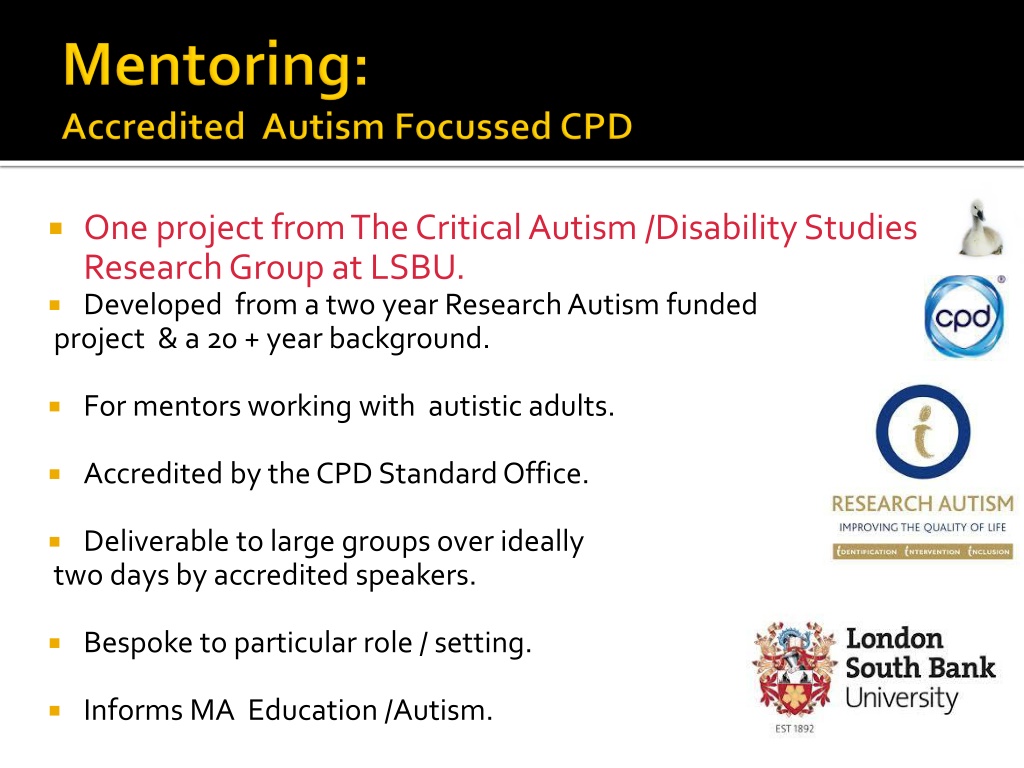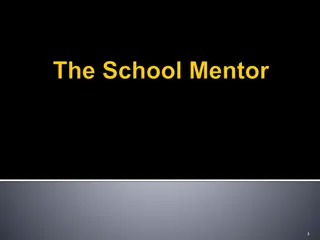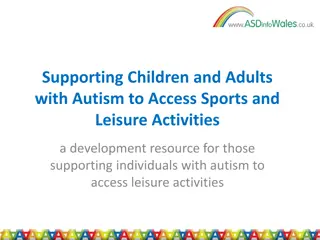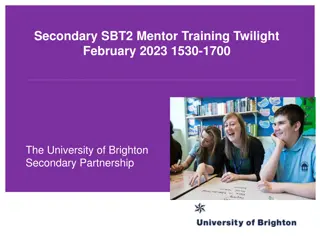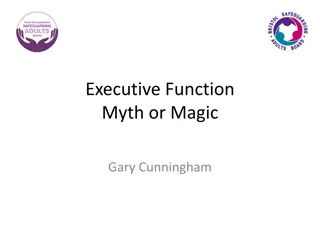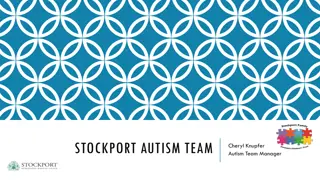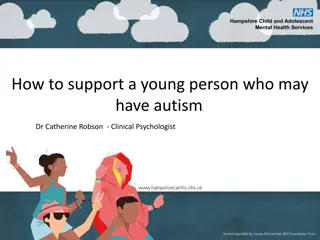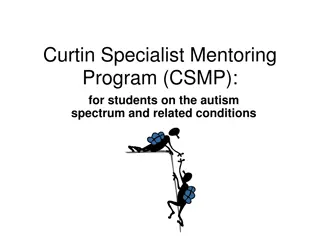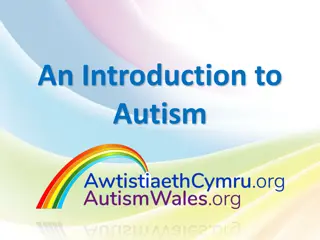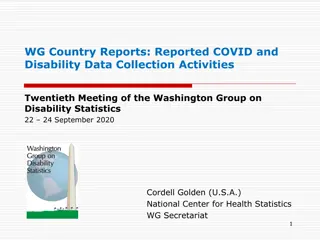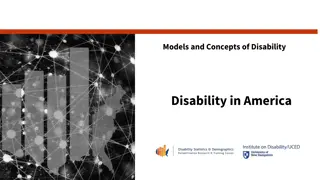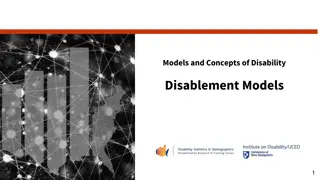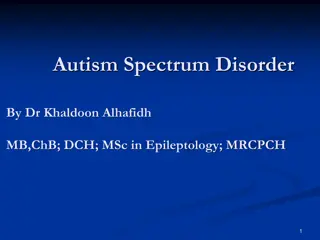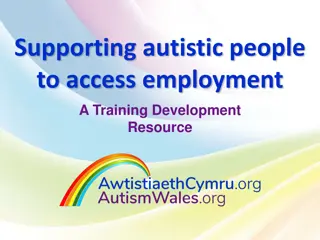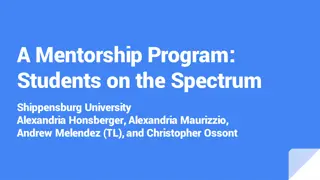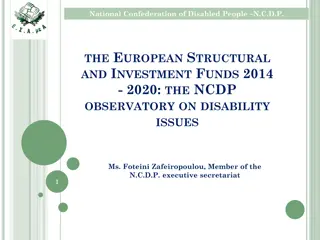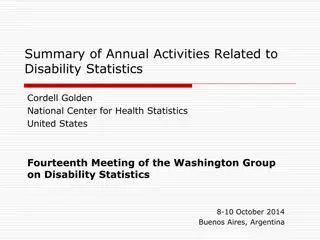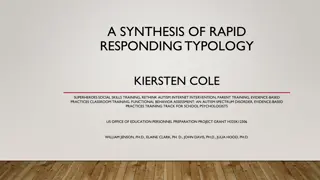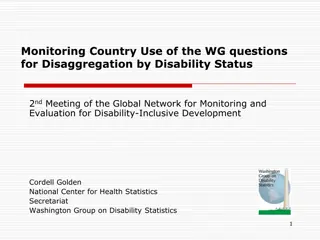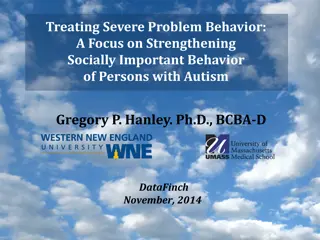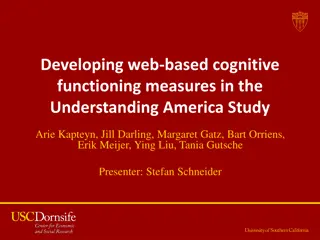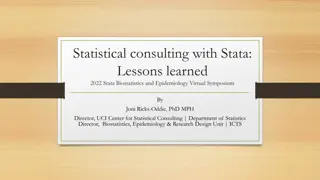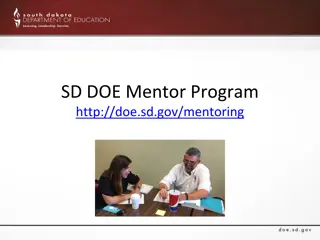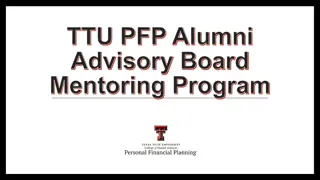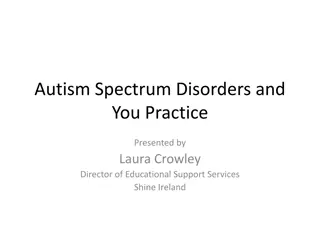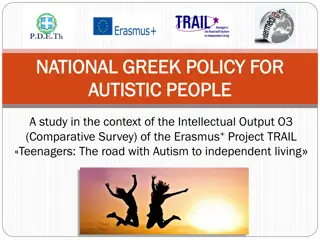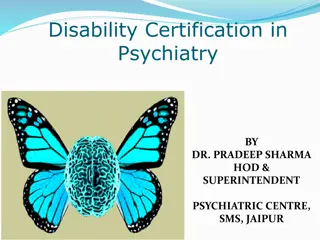Understanding Autism & Disability: Mentor Training and Executive Functioning
This project from The Critical Autism/Disability Studies Research Group at LSBU focuses on mentor training for working with autistic adults, emphasizing goal-setting, action prioritization, time management, and social interactions. It explores concepts like executive functioning, individuality strengths, sensory perceptions, and the Interest Model of Autism. The program aims to enhance understanding and support for individuals with autism while highlighting the importance of empathy in educational contexts.
Download Presentation

Please find below an Image/Link to download the presentation.
The content on the website is provided AS IS for your information and personal use only. It may not be sold, licensed, or shared on other websites without obtaining consent from the author. Download presentation by click this link. If you encounter any issues during the download, it is possible that the publisher has removed the file from their server.
E N D
Presentation Transcript
One project from The Critical Autism /Disability Studies Research Group at LSBU. Developed from a two year Research Autism funded project & a 20 + year background. For mentors working with autistic adults. Accredited by the CPD Standard Office. Deliverable to large groups over ideally two days by accredited speakers. Bespoke to particular role / setting. Informs MA Education /Autism.
Helping with: goal-setting action prioritisation and time-management change and transition social and personal interactions exploring options for the future developing self-confidence new environments or procedures giving /receiving constructive feedback
EXECUTIVE FUNCTIONING CENTRAL COHERENCE Refers to problems with processing overall contextual meanings, whilst simultaneously having advantages in processing details or parts of an overall context. the ability to maintain an appropriate problem-solving strategy in order to attain a future goal. may be a difference within the way autistic executive processing operates, rather than an impairment or deficiency GENDER DIFFERENCES Yet many autistic people are ableto process gist meaning and whole pictures. INDIVIDUALITY STRENGTHS
THE INTEREST MODEL OF AUTISM SENSORY PERCEPTIONS Sensory integration and fragmentation. Hypo and hyper sensitivity. Context and motivation. Stressful stimuli. Stress, arousal and sensory overload meltdown and shutdown . Enhanced sensory perceptions. Monotropism refers to focussed interest. In depth interests and abilities are highly motivating Obsession is a pejorative term.
The starting point for PCT is the idiosyncratic ways in which people make sense of the world and how this influences their actions. PCT attempts to approach issues through the viewpoint of the individual experiencing them, rather than fitting them into preconceived models. Rather than seeing any interpretation as correct , pragmatically consider how useful such a framing is to the individual.
An exercise in empathy Paul is working on his computer on a history project which is part of one module of his first year UG course work. He is spending a vast amount of time on a small detail of this project which is worth 10% of one exam. Paul needs to pass 4 modules to complete the History BA first year. Why might Paul be doing this? How can you find out why Paul might be doing this? How might you help as a mentor /study skills tutor ? How will you know if you are helping?
As with the rest of the population great deal of diversity in personality and temperament. Often with differing responses to stressful experiences when encountered. The fight or flight response meltdowns and shutdowns . Gender differences. Interest differences. Fight or Flight Response
The meltdown response and misunderstandings of it. Challenging behaviour . No choice in the matter. Non-autistic people meltdown too e.g. road rage. Noticing the less obvious - such as more passive natured autistic people and the 'shutdown' response. Characterised by withdrawal. Often unable to think clearly or to express oneself at all. Again no choice in the matter. Spirit of Autism Puberty
The monotropic focus can be useful. Multi-tasking, integrating information, and fragmentation and interruptions to the attention spot light can be problematic. Help the person to recognise and play to their own strengths. Multitasking Sticky Notes
Living with almost constant stress and social disjuncture, can be even more highly damaging when unrecognised. Alienation and isolation, withdrawal from society. Social isolation, Mental ill-health from social anxiety issues to depression, catatonia and suicidal ideation. Remember the outward manifestation of stress may be a lack of expression too. Peers/ others can help or hinder.
Acceptance -work with the autistic person and not against their autism. Awareness of triggers in the environment ( e.g. the fire alarm!). Explore interests and fascinations together. Having strong rapport and building mutually fulfilling and trusting relationships. Encourage autistic companionship (possibly). Encourage understanding of non-autistic people and culture, rather than teaching how to poorly mimic what one is not. Low arousal is not no arousal Help the person to play to their strengths and interests and to access social activities which are fun.
Role Descriptors / Boundaries /Expectations / Recording Meeting your mentee for the first time How will you : minimise stress? make responsibilities, expectations and boundaries clear What arrangements will you put in place to ensure that if a session has to be cancelled the disruption to the mentee will be minimised? What approach will you use to agree a way of working together? Context specific record keeping What supervision arrangements are in place and why are they important? Bespoke training and follow up (eg with supervision or service development)
On the lines below, please mark how satisfied you are with your current level of attainment of each of your goals for mentoring Goal 1:____________________________________________________________________________ __________________________________________________________________________________ 1 2 3 4 5 6 7 8 9 10 Completely satisfied Completely dissatisfied (Adapted from Salmon 1988*) The person is asked to place him/herself on the line in relation to their perceptions of how they are performing in this area currently. Ideas for progressing towards achievement can be generated in small, achievable steps. For each aspect of life that is chosen, it is represented on a continuum with one end representing satisfaction in that area and the other representing dissatisfaction. Salmon P (1988) Psychology for Teachers: An Alternative Approach. London: Routledge
A mentee identifies that their goal is to have a better relationship with a particular person. Ask the mentee to give their view on what the bottom end of the continuum looks like and what the top end of the continuum looks like. Ask the mentee to mark on the continuum where they are currently and what this looks like. Discuss with the mentee where they would like to be on the continuum at the end of the six months mentoring and what this would look like. Then explore participant s beliefs about how they can move along the line from where they are now to the point they would like to be.
Reliable, empathic, anticipatory and logical. Please contact me for more information martinn4@lsbu.ac.uk. 02078155779 Thankyou. Nicola Martin
